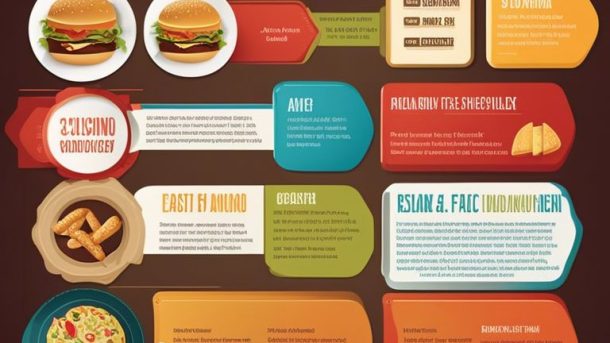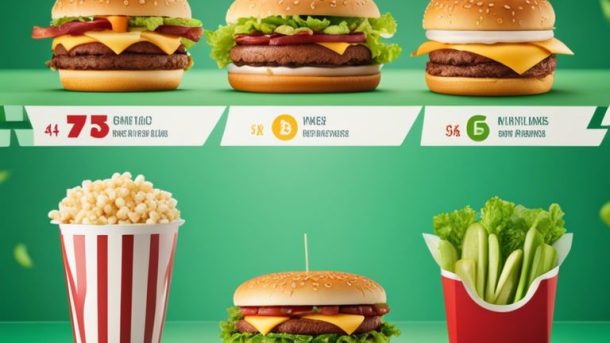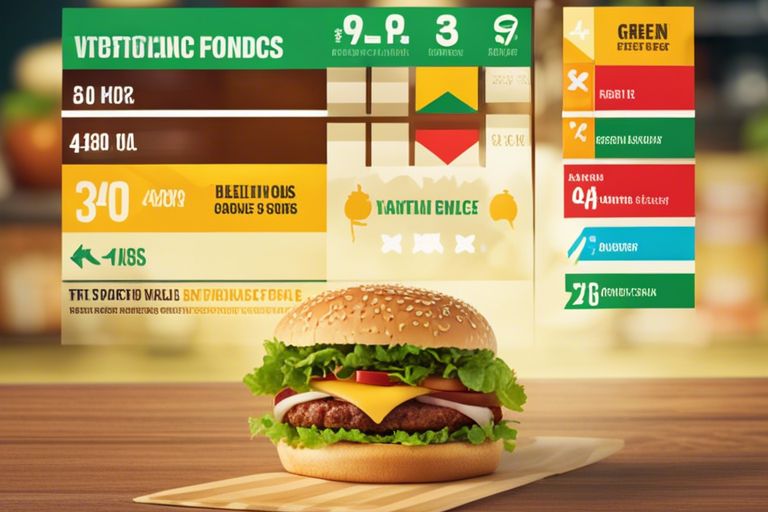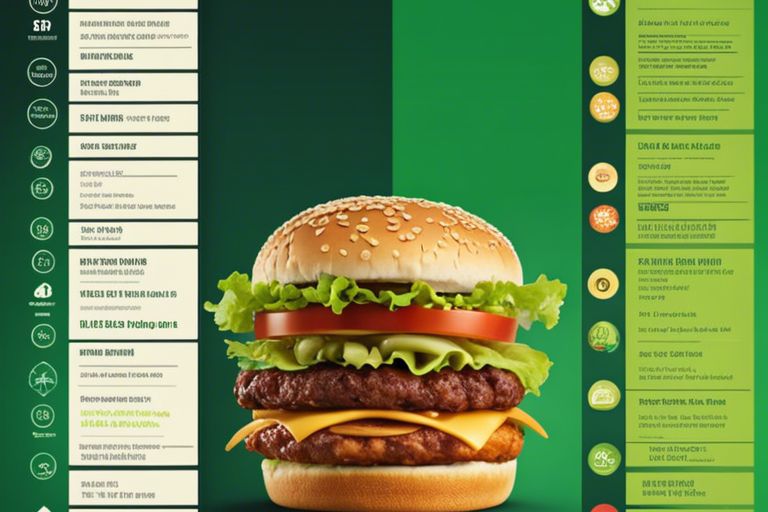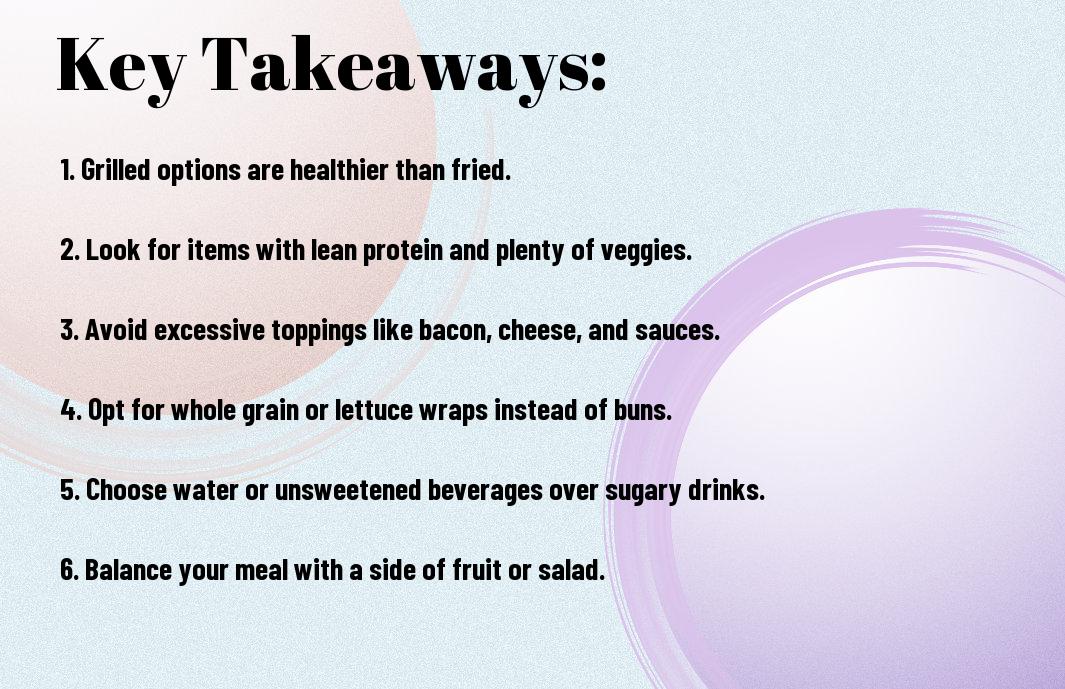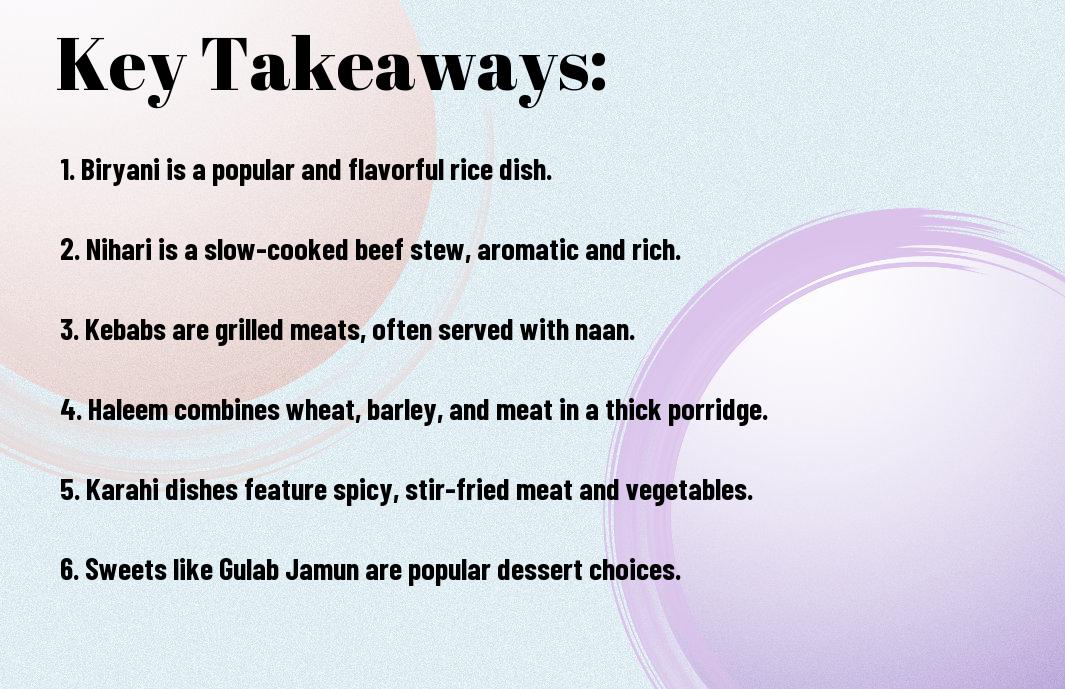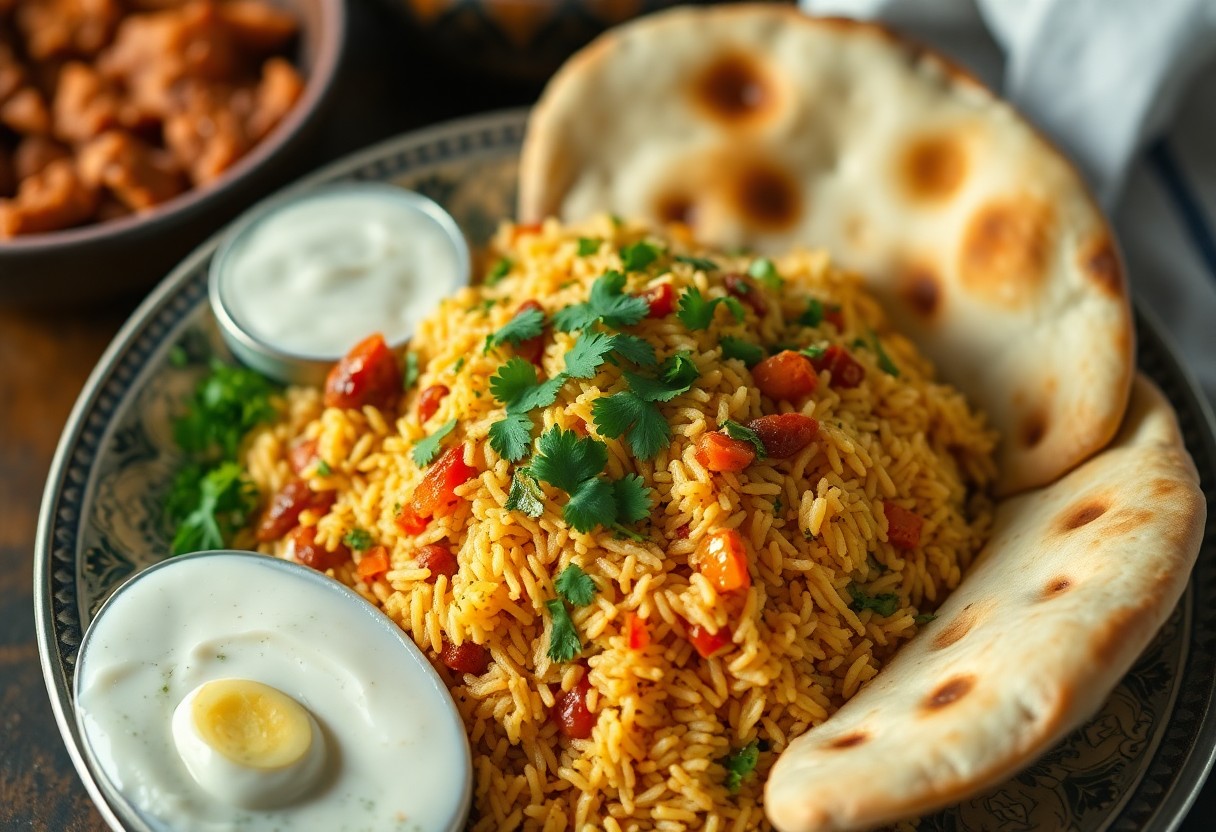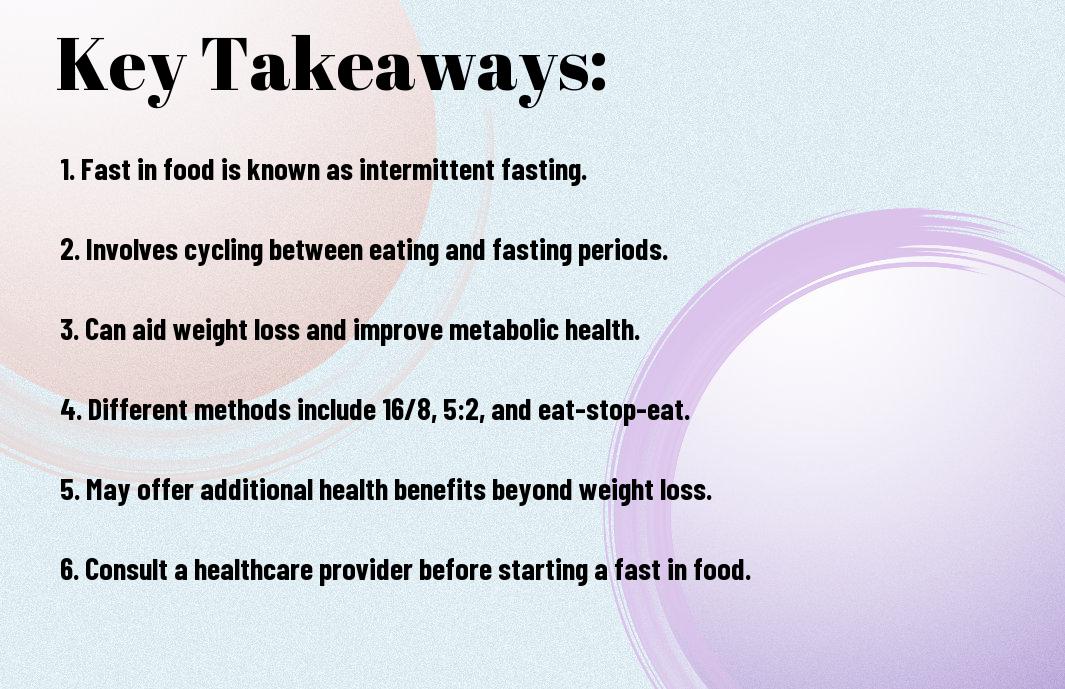With the convenience and popularity of fast food chains, have you ever stopped to think about the facts behind these quick dining options? In this informative blog post, we will examine into the world of fast food and uncover some surprising truths about your favorite fast-food chains. You’ll be amazed at what you discover about the food you may be consuming on a regular basis. To read more, check out 18 facts about your favorite fast-food chains that might surprise you.
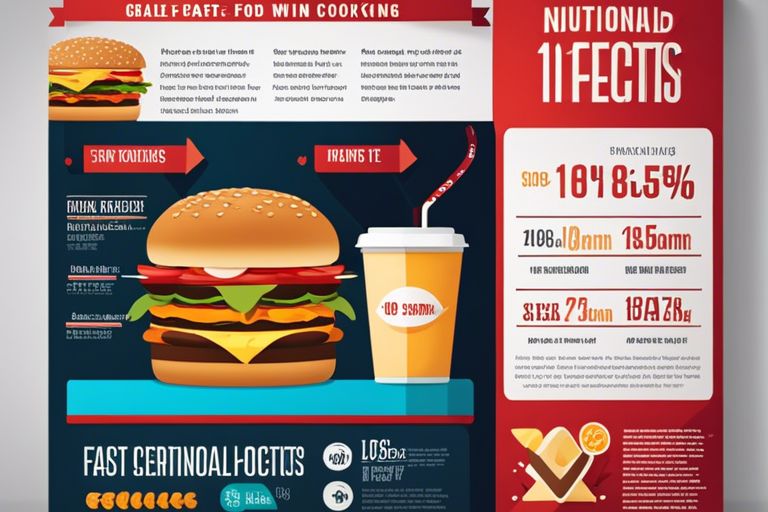
Key Takeaways:
- Unhealthy Options: Fast food is often high in calories, saturated fats, sugars, and sodium, leading to various health concerns like obesity and heart disease.
- Convenience: Fast food offers quick service and easy accessibility, making it a popular choice for individuals looking for a quick meal on-the-go.
- Economic Impact: Fast food chains contribute significantly to the economy by providing jobs, boosting local businesses, and generating revenue for the food industry.
Definition of Fast Food
While you may have a general idea of what fast food is, it is important to examine into a more detailed definition. Fast food is typically defined as food that is quick to prepare and serve, making it convenient for people on the go. These foods are often high in calories, saturated fats, sugars, and sodium, and are commonly found in restaurants that prioritize speed and efficiency over quality and nutrition.
Origins of Fast Food
The origins of fast food can be traced back to the early 20th century in the United States. The fast food industry grew rapidly with the emergence of drive-through restaurants and franchising, making it easier for fast food chains to expand and reach a larger audience. Fast food became synonymous with efficiency, affordability, and accessibility, revolutionizing the way people consumed food.
Characteristics of Fast Food
Food categorized as fast food is often mass-produced in large quantities, leading to consistency in taste and appearance across different locations. These foods are designed to be consumed quickly, with minimal wait time between ordering and eating. They are also usually highly processed, containing preservatives and additives to prolong shelf life and enhance flavor.
A significant characteristic of fast food is its low nutritional value, typically high in unhealthy fats, sugars, and calories, while lacking important nutrients like vitamins, minerals, and fiber. Consuming fast food regularly can have negative effects on your health, leading to weight gain, obesity, and various chronic diseases.
History of Fast Food
Early Beginnings
An understanding of the history of fast food begins with the assumption that fast food has been around for centuries in various forms. You might be surprised to learn that the concept of grabbing a quick bite to eat dates back to ancient civilizations. For example, the ancient Greeks and Romans had establishments selling bread, wine, and prepared meals for travelers.
Rise of Chain Restaurants
For a more modern perspective, the rise of chain restaurants in the early 20th century played a significant role in shaping the fast-food industry. These restaurants focused on standardization, efficiency, and affordability, making it easier for people to access quick meals on the go. The introduction of drive-through service further revolutionized the way fast food was consumed.
With the rise of chain restaurants, fast food became more than just a convenient meal option. It became a cultural phenomenon, deeply ingrained in American society and eventually spreading worldwide.
Globalization of Fast Food
Early globalization efforts by fast-food giants like McDonald’s and KFC in the mid-20th century marked a new era in the history of fast food. With the success of these chains in the United States, they quickly expanded overseas, bringing American-style fast food to countries around the world. This led to a blending of global cuisines and the standardization of fast food offerings.
Globalization has not only influenced the types of fast food available but also the eating habits and health implications associated with consuming fast food regularly. As you explore the history of fast food, keep in mind the significant impact it has had on both culinary practices and society as a whole.
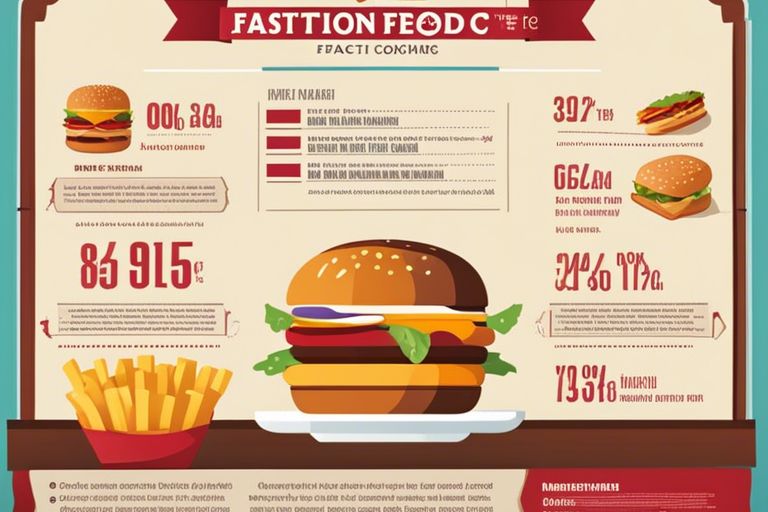
Nutritional Value of Fast Food
High Calorie Counts
The high calorie counts in fast food can be attributed to the large portion sizes and high levels of unhealthy fats, sugar, and salt. This makes it easy to consume excess calories in just one meal, leading to weight gain and potential health issues like obesity and diabetes.
Low Nutrient Density
High in calories but low in necessary nutrients like vitamins, minerals, and fiber, fast food is considered to have low nutrient density. This means that you may feel full after eating fast food, but you’re not getting the necessary nutrients your body needs to function properly.
With a diet high in low-nutrient foods like fast food, you may be at risk of nutrient deficiencies over time. This can have negative impacts on your overall health and well-being, despite feeling temporarily satisfied after consuming fast food.
Additives and Preservatives
One of the concerning aspects of fast food is the use of additives and preservatives to enhance flavor, texture, and shelf life. These chemicals may have negative effects on your health, including potential links to cancer, allergies, and other health issues.
Fast food chains often prioritize convenience and cost-effectiveness over the quality of ingredients, leading to the use of artificial additives and preservatives. By consuming these additives regularly, you may be putting your health at risk in the long run.
Impact on Health
Obesity and Weight-Related Issues
For many people, the convenience and affordability of fast food can lead to unhealthy eating habits and ultimately contribute to obesity and weight-related issues. When you rely on fast food as a staple in your diet, you are more likely to consume excessive calories, unhealthy fats, and sugars that can quickly add up and lead to weight gain.
Increased Risk of Chronic Diseases
On top of obesity, regularly consuming fast food is associated with an increased risk of chronic diseases such as heart disease, type 2 diabetes, and high blood pressure. These health conditions can have serious long-term consequences and impact your quality of life.
Weight-related issues like obesity can increase the chances of developing these chronic diseases, as excessive body weight puts a strain on your heart and other organs. By making healthier food choices and reducing your intake of fast food, you can lower your risk of developing these conditions.
Mental Health Concerns
Plus, the impact of fast food on your mental health is often overlooked. Research has shown that a diet high in fast food and processed foods can be linked to an increased risk of depression, anxiety, and other mental health disorders. The lack of vital nutrients in fast food can lead to imbalances in brain chemistry, affecting your mood and overall mental well-being.
Obesity resulting from a diet heavy in fast food can also contribute to low self-esteem and body image issues, further impacting your mental health. Taking care of your physical health by making nutritious food choices can have a positive ripple effect on your mental health as well.
Understanding the impact of fast food on your health is crucial in making informed decisions about your diet. By being mindful of the potential consequences of regularly consuming fast food, you can take steps to prioritize your health and well-being through healthier eating habits.
Environmental Impact
Your Fun and Interesting Facts about Fast Food journey may have highlighted the convenience and popularity of fast food, but it’s crucial to understand the environmental impact it has. Fast food production and consumption have significant consequences on the environment, from packaging waste to resource depletion and carbon footprint.
Packaging Waste
With the rise of fast food chains, there has been a corresponding increase in packaging waste. Most fast food items come in single-use packaging, such as plastic containers, bags, and wrappers. These items are often not recyclable and end up in landfills, contributing to environmental pollution. The amount of packaging waste generated by the fast food industry adds to the global waste crisis and harms ecosystems.
Resource Depletion
Waste is not the only environmental issue associated with fast food. The production of fast food ingredients contributes to resource depletion, such as water, land, and energy. The mass production of ingredients like beef, poultry, and crops requires large amounts of water for irrigation, land for agriculture, and energy for processing and transportation.
Impact on natural resources can lead to deforestation, water scarcity, and habitat destruction. Unsustainable farming practices, such as monocropping and overuse of pesticides, further exacerbate these issues. Fast food’s demand for resources puts a strain on the environment and contributes to long-term ecological damage.
Carbon Footprint
The carbon footprint of fast food is substantial due to the entire production process, including agriculture, transportation, and packaging. The industrial farming practices used to meet the high demand for fast food ingredients release greenhouse gases into the atmosphere, contributing to climate change. Additionally, the transportation of ingredients from farms to processing plants to restaurants adds to carbon emissions.
The intense energy requirements for food processing, refrigeration, and cooking in fast food establishments further increase carbon emissions. The carbon footprint of fast food continues to grow as consumption rises, underscoring the importance of sustainable food practices to mitigate environmental impact.
Resource-efficient practices, such as sustainable sourcing of ingredients and eco-friendly packaging options, can help reduce the environmental impact of fast food. By being mindful of the resources consumed in the production and consumption of fast food, you can make informed choices that promote environmental sustainability and support a healthier planet for future generations.
Social and Cultural Implications
Changing Eating Habits
To keep up with the fast-paced lifestyle, fast food has become a convenient option for many people. Any frequent consumption of fast food can lead to a shift in your eating habits. It may lead to a decrease in the consumption of fresh fruits, vegetables, and home-cooked meals, which are important for a balanced diet. Over time, this can impact your overall health and well-being.
Influence on Food Culture
For many communities, fast food has started to replace traditional meals and local cuisine. The easy accessibility and affordability of fast food have led to a significant influence on food culture. This can affect the way you perceive food, nutrition, and mealtime traditions, ultimately shaping your dietary choices.
Socially, the rise of fast food culture has also impacted the way people socialize and engage with food. Fast food restaurants have become popular meeting spots for friends and families, often replacing traditional gatherings around the dining table. This shift in social behavior can alter the dynamics of interpersonal relationships and shared experiences related to food.
Economic Disparities
To some extent, your economic status can influence your relationship with fast food. Those with lower incomes may find fast food more accessible and affordable than healthier food options. This can lead to disparities in health outcomes, as frequent consumption of fast food has been linked to various health issues like obesity and heart disease. It’s important to be mindful of your food choices and prioritize health over convenience, whenever possible.
Influence on food culture can also have economic implications. The dominance of fast food chains in certain communities can impact local businesses and traditional food establishments. This can result in economic disparities within the community, as smaller businesses struggle to compete with the convenience and marketing power of fast food giants.
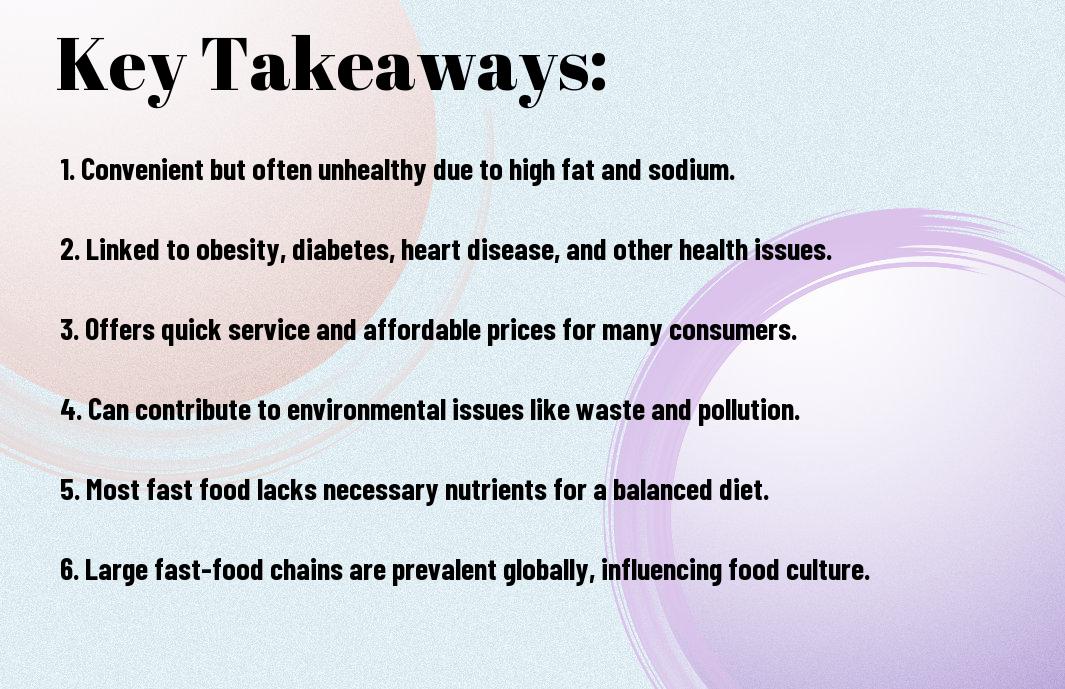
Final Words
Hence, it is evident that fast food has become a prevalent part of our modern society, impacting our health, environment, and economy. As you continue to consume fast food, it is necessary to be mindful of its effects on your well-being and the world around you. By making informed choices and seeking healthier alternatives, you can take control of your diet and contribute to a more sustainable food system.
Q: What is fast food?
A: Fast food is a type of mass-produced food that is prepared and served very quickly. It is typically high in calories, fats, sugars, and sodium, often lacking in nutritional value.
Q: Why is fast food popular?
A: Fast food is popular due to its convenience, affordability, and wide availability. It is often seen as a quick and easy meal option for people on-the-go or with busy schedules.
Q: What are the health risks associated with fast food consumption?
A: Regular consumption of fast food can lead to various health risks, including obesity, heart disease, diabetes, high blood pressure, and other chronic conditions. It is important to consume fast food in moderation and balance it with healthier food choices.
